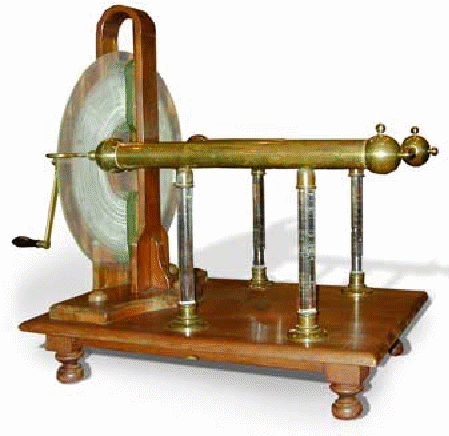Storing Charge in Early Electric Machines
During the eighteenth century the first machines were constructed for generating and storing electric charge., mostly consisting of glass rotated against cloth pads. These machines typically produced successions of small sparks, but it was soon discovered that much bigger sparks could be produced if charge were stored on large pieces of metal, called prime conductor was used. The machine below uses a rotating glass disk turned by a handle. The disc rubs against cloth or fur pads on either side as it turns.

The pads are connected to earth, so the negative charge which collects on them leaks away, but the positive charge is leaked onto the prime conductors (there are two in the diagram above). These can be charged to higher voltages.